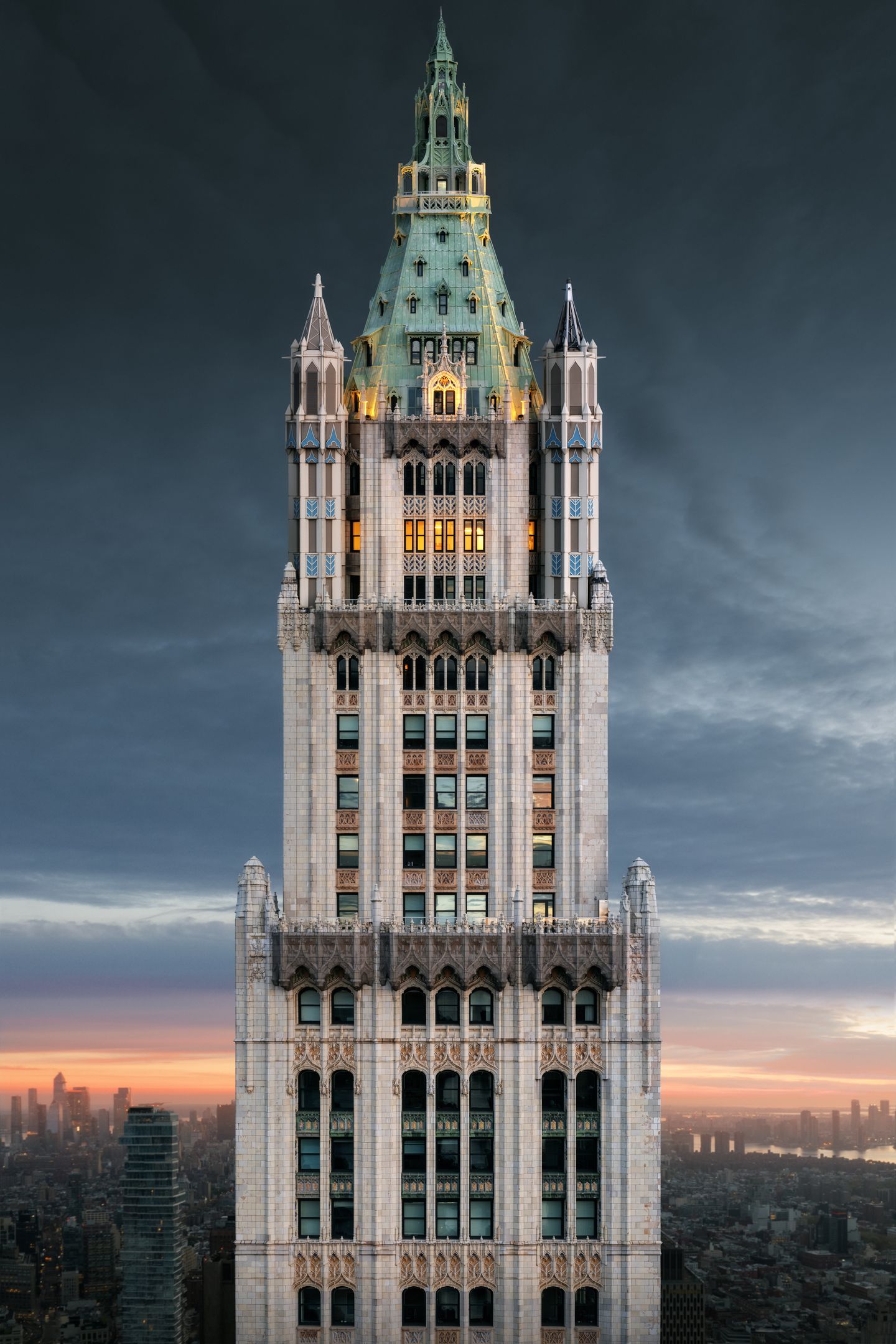

Woolworth Building
Art by: Chris Hytha
Story by: Mark Houser
Frank Woolworth was a master of eye-catching displays. His namesake skyscraper, once taller than any man-made structure in the world except the Eiffel Tower, is proof of that.
Raised on a potato farm, Woolworth struggled with clerking at a dry goods store until the boss had him arrange a table with pens, crocheting needles, harmonicas, soap, and other cheap goods with a sign offering each for a nickel. It was a success, and soon Woolworth was in the five-and-dime business. By 1910, his retail empire numbered 286 stores earning a penny of profit on every sale.
Woolworth and his company occupied only two floors of this highrise, which faces City Hall and the Brooklyn Bridge. It was mainly for show and rental income — a "machine that makes the land pay," as architect Cass Gilbert put it. Trimmed in creamy terracotta with accents of blue, green, and gold paint, the "Cathedral of Commerce" contained enough bricks to pave a road the length of Manhattan.
Visitors still crook their necks in New York’s most magnificent office lobby. Their gaze rises past golden marble walls to vaulted ceilings adorned with murals and mosaics, supported by a coterie of carved grotesques that depict the men involved in the construction, including Woolworth himself counting nickels and dimes.
Highrises are the iconic elements of American cities. Reaching radical new heights in technological advancement, skyscrapers fused Classical, Renaissance, and Gothic motifs onto steel and defined a new architectural language with Art Deco and International.
The Highrises project reveals hidden details of remarkable buildings, including many that are underappreciated. The images showcase structures that reflect the values and ideals animating the early 20th century. The stories provide historical context and deepen our understanding of their importance and value.
Highrise #143

- PriceUSD PriceQuantityExpirationFrom
- PriceUSD PriceQuantityFloor DifferenceExpirationFrom
Woolworth Building
Art by: Chris Hytha
Story by: Mark Houser
Frank Woolworth was a master of eye-catching displays. His namesake skyscraper, once taller than any man-made structure in the world except the Eiffel Tower, is proof of that.
Raised on a potato farm, Woolworth struggled with clerking at a dry goods store until the boss had him arrange a table with pens, crocheting needles, harmonicas, soap, and other cheap goods with a sign offering each for a nickel. It was a success, and soon Woolworth was in the five-and-dime business. By 1910, his retail empire numbered 286 stores earning a penny of profit on every sale.
Woolworth and his company occupied only two floors of this highrise, which faces City Hall and the Brooklyn Bridge. It was mainly for show and rental income — a "machine that makes the land pay," as architect Cass Gilbert put it. Trimmed in creamy terracotta with accents of blue, green, and gold paint, the "Cathedral of Commerce" contained enough bricks to pave a road the length of Manhattan.
Visitors still crook their necks in New York’s most magnificent office lobby. Their gaze rises past golden marble walls to vaulted ceilings adorned with murals and mosaics, supported by a coterie of carved grotesques that depict the men involved in the construction, including Woolworth himself counting nickels and dimes.
Highrises are the iconic elements of American cities. Reaching radical new heights in technological advancement, skyscrapers fused Classical, Renaissance, and Gothic motifs onto steel and defined a new architectural language with Art Deco and International.
The Highrises project reveals hidden details of remarkable buildings, including many that are underappreciated. The images showcase structures that reflect the values and ideals animating the early 20th century. The stories provide historical context and deepen our understanding of their importance and value.